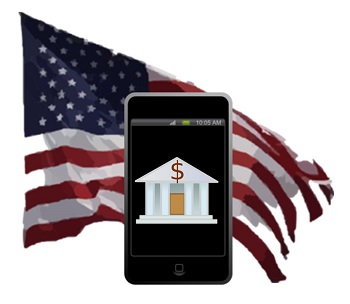The hot mobile commerce application has linked up with the hit celebrity’s game for a whole new experience.
The popular m-commerce mobile apps from Spring and from Kim Kardashian have now joined together to help to provide an improved overall experience that will result in considerable growth to the user base of both applications.
The Spring and Kim Kardashian: Hollywood applications let users use a game experience to enjoy fashion.
The combined mobile apps will provide users with a virtual boutique inside the game that will allow Spring to place the name of its products in front of the tens of millions of players of Kim Kardashian: Hollywood. That game app now allows user to be able to clothe their avatars in the items available at Spring. Players can choose items from among 12 different brands carried by Spring, such as Clare Vivier and Jonathan Simkhai.
Links are embedded within the combined mobile apps to encourage players to download and then shop.
 In that way, one of the Kim Kardashian: Hollywood mobile game players will be able to dress their avatar, click on a link to download the Spring app, and then shop for the types of items they saw while they were creating an outfit for their avatar.
In that way, one of the Kim Kardashian: Hollywood mobile game players will be able to dress their avatar, click on a link to download the Spring app, and then shop for the types of items they saw while they were creating an outfit for their avatar.
This isn’t the first time Kardashian’s game app has played host to another company’s experience. In fact, top designers Olivier Rousteing and Karl Lagerfeld have both used the mobile application to promote some of their own collections. That said, this relationship with Spring does represent the first time the game has been used to sell several brands simultaneously in order to be able to boost visibility in front of a broader and younger demographic as it steps into its second year.
First launched in 2014, Spring has seen a tremendous growth through its mobile apps and is now selling products in the clothing, accessory, beauty and home categories from several different brands. The interface offered by the application is comparable to that of Instagram, as it offers a feed of images from various brands which have been selected to appeal to the interests identified by the user him/herself.
Several large banks are working to serve mobile consumers better
Major banks in the United States are beginning to take the fight to the mobile payments space after resting on their laurels for several years. Banks had been wary of introducing innovative services and platforms in the past due to the financial crisis of 2008. Now, however, banks are finding that the mobile commerce space has the potential to be quite disruptive. While the mobile commerce space is intrinsically connected to these banks, they want to ensure they can compete on a level that the mobile commerce space has been able to corner, and that involves engaging consumers more effectively.
Banks are beginning to make use of the clearXchange system
For years, mobile commerce companies have made it possible for consumers to send and receive money almost instantaneously. Peer-to-peer payment services have become very popular among young consumers, many of whom rely very heavily on their smartphones. Banks see this as an opportunity, and many have begun to use the clearXchange system, which allows for instant money transfers to friends and families. Customers with U.S. Bancorp and Bank of America can now send money instantly thanks to the new system. JPMorgan and Capital One Financial plan to begin using the system later this year.
PayPal highlights the success companies can find in the mobile commerce space
 The reason the mobile commerce space has become more important to banks is because consumers are becoming more mobile-centric. In the early days of mobile commerce, PayPal managed to find significant success and growth by engaging mobile consumers. In 2013, PayPal acquired mobile payments firm Braintree, which had control of the Venmo mobile application. Last year, Venmo processed more than $7.5 billion in money transfers between consumers. In January of this year, some $1 billion in money transfers had been handled by Venmo.
The reason the mobile commerce space has become more important to banks is because consumers are becoming more mobile-centric. In the early days of mobile commerce, PayPal managed to find significant success and growth by engaging mobile consumers. In 2013, PayPal acquired mobile payments firm Braintree, which had control of the Venmo mobile application. Last year, Venmo processed more than $7.5 billion in money transfers between consumers. In January of this year, some $1 billion in money transfers had been handled by Venmo.
Banks want to find the same success that PayPal has seen over the past few years
The success PayPal saw through its early acquisitions is something that banks want to mimic, especially as more consumers become involved in the mobile commerce space. These banks will have an uphill battle, however, as many consumers have already become comfortable with the mobile payments services they are currently using.
 In that way, one of the Kim Kardashian: Hollywood mobile game players will be able to dress their avatar, click on a link to download the Spring app, and then shop for the types of items they saw while they were creating an outfit for their avatar.
In that way, one of the Kim Kardashian: Hollywood mobile game players will be able to dress their avatar, click on a link to download the Spring app, and then shop for the types of items they saw while they were creating an outfit for their avatar.
 The reason the mobile commerce space has become more important to
The reason the mobile commerce space has become more important to 